Intro
Discover varicose vein removal options, including sclerotherapy, laser treatment, and surgery, to alleviate symptoms and improve appearance, with minimally invasive procedures and effective vein removal techniques for spider veins and chronic venous insufficiency.
Varicose veins are a common condition that affects millions of people worldwide. These enlarged, twisted veins can be painful and unsightly, causing discomfort and embarrassment for those who suffer from them. Fortunately, there are several varicose vein removal options available, ranging from non-invasive treatments to surgical procedures. In this article, we will explore the various options for removing varicose veins, their benefits, and what to expect from each treatment.
Varicose veins can occur anywhere in the body, but they are most commonly found in the legs. This is because the veins in the legs have to work against gravity to return blood to the heart, which can cause them to become weakened and enlarged over time. Factors such as genetics, age, and lifestyle can also contribute to the development of varicose veins. While they may not be a serious health concern, varicose veins can cause symptoms such as pain, swelling, and itching, which can significantly impact a person's quality of life.
For many people, the primary motivation for seeking varicose vein removal is to alleviate these symptoms and improve the appearance of their legs. However, it's essential to understand that varicose vein removal is not just a cosmetic procedure. In some cases, varicose veins can lead to more severe health complications, such as blood clots, ulcers, and skin discoloration. By removing varicose veins, individuals can reduce their risk of developing these complications and improve their overall health and wellbeing.
Non-Invasive Varicose Vein Removal Options
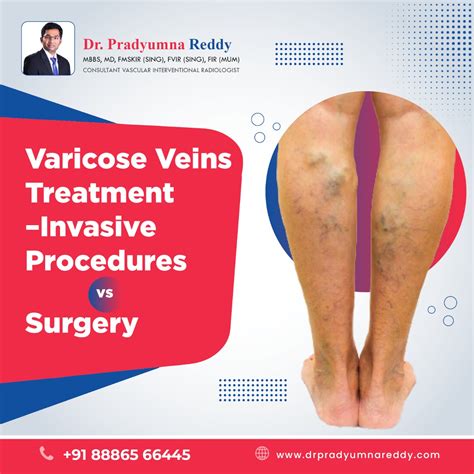
Non-invasive varicose vein removal options are typically the first line of treatment for mild to moderate varicose veins. These procedures are usually performed in a doctor's office or clinic and require minimal downtime. Some of the most common non-invasive varicose vein removal options include:
- Sclerotherapy: This involves injecting a solution into the affected vein to close it off and prevent blood from flowing through it.
- Endovenous laser therapy: This uses a laser to heat the vein and close it off.
- Radiofrequency ablation: This uses radiofrequency energy to heat the vein and close it off.
- Compression therapy: This involves wearing compression stockings to help improve blood flow and reduce swelling.
These non-invasive treatments are often effective for small to medium-sized varicose veins, but they may not be suitable for larger or more severe cases.
Benefits of Non-Invasive Varicose Vein Removal
The benefits of non-invasive varicose vein removal include: * Minimal downtime and recovery time * Reduced risk of complications and scarring * Can be performed in a doctor's office or clinic * Often less expensive than surgical procedures * Can be used to treat multiple veins at onceHowever, non-invasive varicose vein removal may not be suitable for everyone. In some cases, the veins may be too large or too twisted to be treated with non-invasive methods. Additionally, some people may experience side effects such as bruising, swelling, or skin discoloration after treatment.
Surgical Varicose Vein Removal Options
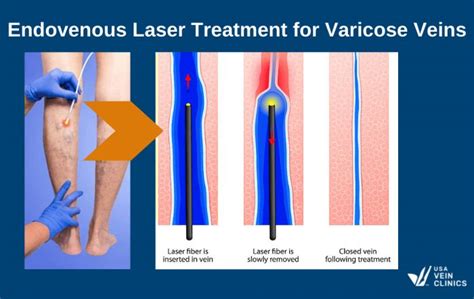
Surgical varicose vein removal options are typically reserved for more severe cases of varicose veins. These procedures are usually performed in a hospital or surgical center and require general anesthesia. Some of the most common surgical varicose vein removal options include:
- Vein stripping: This involves removing the affected vein from the leg.
- Phlebectomy: This involves removing the affected vein through small incisions in the skin.
- Endoscopic vein surgery: This uses a small camera and surgical instruments to remove the affected vein.
Surgical varicose vein removal is often more effective for larger or more severe varicose veins, but it carries a higher risk of complications and scarring.
Risks and Complications of Surgical Varicose Vein Removal
The risks and complications of surgical varicose vein removal include: * Bleeding and hematoma * Infection * Scarring and skin discoloration * Nerve damage * Deep vein thrombosisIt's essential to discuss the potential risks and complications with a doctor before undergoing surgical varicose vein removal.
Minimally Invasive Varicose Vein Removal Options
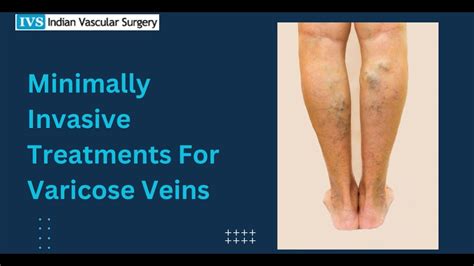
Minimally invasive varicose vein removal options are a relatively new development in the field of varicose vein treatment. These procedures are designed to be less invasive than traditional surgery, but more effective than non-invasive treatments. Some of the most common minimally invasive varicose vein removal options include:
- Endovenous mechanical obstruction: This uses a small device to block the flow of blood through the affected vein.
- VenaSeal: This uses a special adhesive to close the affected vein.
- Clarivein: This uses a combination of mechanical and chemical obstruction to close the affected vein.
Minimally invasive varicose vein removal options are often used to treat larger or more severe varicose veins that are not suitable for non-invasive treatment.
Benefits of Minimally Invasive Varicose Vein Removal
The benefits of minimally invasive varicose vein removal include: * Less invasive than traditional surgery * Reduced risk of complications and scarring * Faster recovery time * Often more effective than non-invasive treatments * Can be used to treat larger or more severe varicose veinsHowever, minimally invasive varicose vein removal may not be suitable for everyone. In some cases, the veins may be too twisted or too large to be treated with minimally invasive methods. Additionally, some people may experience side effects such as bruising, swelling, or skin discoloration after treatment.
What to Expect from Varicose Vein Removal
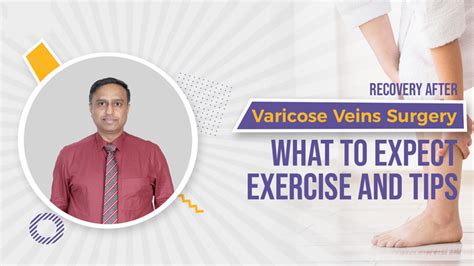
What to expect from varicose vein removal depends on the type of treatment chosen. Non-invasive treatments typically require minimal downtime and recovery time, while surgical procedures may require several days or weeks of rest and recovery. Minimally invasive treatments usually require some downtime, but less than traditional surgery.
It's essential to follow a doctor's instructions carefully after varicose vein removal to ensure proper healing and minimize the risk of complications. This may include wearing compression stockings, elevating the legs, and avoiding heavy lifting or strenuous activities.
Aftercare and Follow-Up
Aftercare and follow-up are crucial after varicose vein removal. This may include: * Wearing compression stockings to help improve blood flow and reduce swelling * Elevating the legs to reduce swelling and promote healing * Avoiding heavy lifting or strenuous activities * Following a doctor's instructions carefully * Attending follow-up appointments to monitor progress and remove any sutures or dressingsBy following these steps, individuals can ensure a smooth and successful recovery from varicose vein removal.
Cost and Insurance Coverage
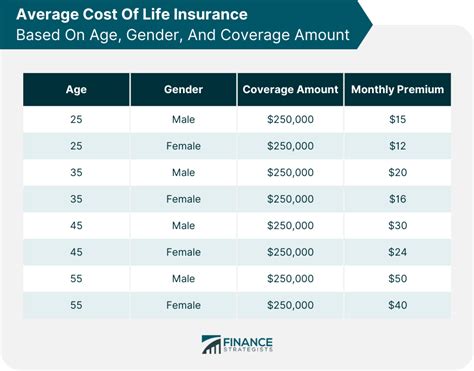
The cost of varicose vein removal varies depending on the type of treatment chosen, the severity of the condition, and the location of the treatment. Non-invasive treatments are often less expensive than surgical procedures, while minimally invasive treatments may be more expensive than non-invasive treatments but less expensive than traditional surgery.
Insurance coverage for varicose vein removal also varies depending on the type of treatment and the individual's insurance plan. Some insurance plans may cover varicose vein removal as a medical necessity, while others may consider it a cosmetic procedure.
Insurance Coverage and Financing Options
Insurance coverage and financing options for varicose vein removal include: * Checking with the insurance provider to determine coverage * Financing options such as loans or credit cards * Payment plans or sliding scale fees * Government assistance programsIt's essential to discuss financing options with a doctor or healthcare provider before undergoing varicose vein removal.
Conclusion and Final Thoughts

Varicose vein removal is a highly effective treatment for varicose veins, offering relief from symptoms and improvement in appearance. With so many options available, it's essential to consult with a doctor to determine the best course of treatment. By understanding the benefits and risks of each treatment option, individuals can make informed decisions about their care.
Whether you're seeking relief from symptoms or improvement in appearance, varicose vein removal can help. Don't hesitate to take the first step towards a healthier, happier you. Consult with a doctor today to learn more about varicose vein removal options and find the best treatment for your needs.
What are the symptoms of varicose veins?
+Varicose veins can cause symptoms such as pain, swelling, itching, and skin discoloration. In some cases, varicose veins can lead to more severe health complications, such as blood clots, ulcers, and skin infections.
What are the causes of varicose veins?
+Varicose veins can be caused by a combination of factors, including genetics, age, lifestyle, and medical conditions. Weakened or damaged veins, blood clots, and valve problems can also contribute to the development of varicose veins.
What are the treatment options for varicose veins?
+Treatment options for varicose veins include non-invasive procedures such as sclerotherapy, endovenous laser therapy, and radiofrequency ablation, as well as surgical procedures such as vein stripping and phlebectomy. Minimally invasive procedures such as endovenous mechanical obstruction and VenaSeal are also available.
How long does it take to recover from varicose vein removal?
+Recovery time from varicose vein removal varies depending on the type of treatment chosen. Non-invasive treatments typically require minimal downtime, while surgical procedures may require several days or weeks of rest and recovery. Minimally invasive treatments usually require some downtime, but less than traditional surgery.
Is varicose vein removal covered by insurance?
+Insurance coverage for varicose vein removal varies depending on the type of treatment and the individual's insurance plan. Some insurance plans may cover varicose vein removal as a medical necessity, while others may consider it a cosmetic procedure. It's essential to check with the insurance provider to determine coverage.
We hope this article has provided you with a comprehensive understanding of varicose vein removal options. If you have any further questions or would like to share your experiences, please don't hesitate to comment below. Share this article with your friends and family to help spread awareness about varicose vein removal. Take the first step towards a healthier, happier you and consult with a doctor today to learn more about varicose vein removal options.
